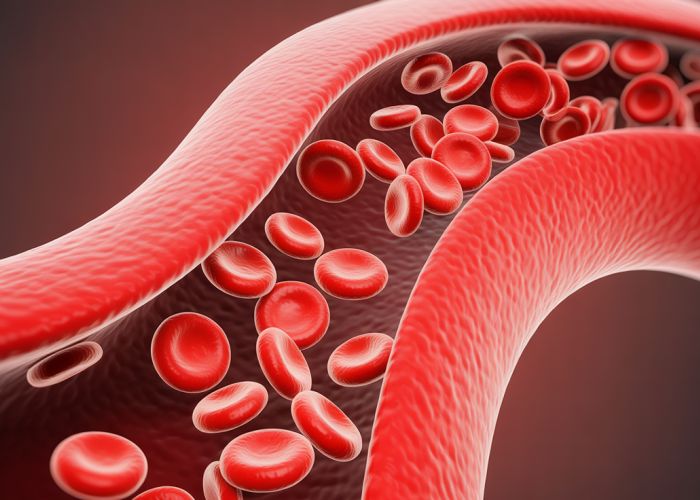The human body, a marvel of biological engineering, relies on efficient oxygen delivery. Hemoglobin, the iron-containing protein, represents a key entity in this process, effectively binding to oxygen within red blood cells. These specialized cells circulate tirelessly throughout the circulatory system, guided by the physiological principles established by pioneers like Christian Bohr. Understanding what transports oxygen, therefore, involves recognizing the intricate interplay between these elements and how they ensure cellular respiration.

Oxygen Shuttles: Unveiling What Transports Oxygen in Your Body
The transportation of oxygen is fundamental to life. This section explains the key players involved in delivering oxygen from your lungs to every cell in your body. We will focus on what transports oxygen most efficiently and how this process works.
The Prime Carrier: Hemoglobin
Hemoglobin, a protein found within red blood cells (erythrocytes), is the primary molecule responsible for what transports oxygen in the circulatory system. Its unique structure allows it to bind to oxygen molecules in areas of high oxygen concentration, such as the lungs, and release them in areas of low oxygen concentration, such as tissues.
Hemoglobin’s Structure: A Closer Look
- Hemoglobin is a complex protein composed of four subunits: two alpha (α) globin chains and two beta (β) globin chains.
- Each globin chain contains a heme group, which is a porphyrin ring that holds a single iron (Fe2+) atom.
- It’s this iron atom that directly binds to oxygen. Therefore, each hemoglobin molecule can carry up to four oxygen molecules.
How Hemoglobin Binds Oxygen
The binding of oxygen to hemoglobin is a reversible process, meaning hemoglobin can both bind and release oxygen depending on the surrounding environment. This affinity for oxygen is influenced by several factors:
- Partial Pressure of Oxygen (PO2): Higher PO2, as found in the lungs, promotes oxygen binding. Lower PO2, as found in tissues, promotes oxygen release.
- pH: A slightly higher pH (more alkaline) increases hemoglobin’s affinity for oxygen, while a lower pH (more acidic) decreases it. This is known as the Bohr effect.
- Temperature: Lower temperatures increase hemoglobin’s affinity for oxygen. Higher temperatures decrease it.
- 2,3-Diphosphoglycerate (2,3-DPG): This molecule, produced by red blood cells, reduces hemoglobin’s affinity for oxygen, facilitating oxygen release to the tissues.
Red Blood Cells: The Hemoglobin Delivery Vehicles
While hemoglobin is what transports oxygen on a molecular level, it’s the red blood cells that act as the delivery vehicles. These specialized cells are packed with millions of hemoglobin molecules, maximizing oxygen-carrying capacity.
Red Blood Cell Characteristics
- Shape: Red blood cells have a biconcave disc shape. This increases their surface area, facilitating efficient oxygen exchange.
- Flexibility: Their flexible membrane allows them to squeeze through narrow capillaries, ensuring oxygen delivery to even the most remote tissues.
- Lack of Nucleus: Mature red blood cells lack a nucleus, allowing more space for hemoglobin.
The Role of Red Blood Cells in Oxygen Transport
- Red blood cells travel from the lungs, where hemoglobin binds to oxygen, forming oxyhemoglobin.
- Oxyhemoglobin circulates through the bloodstream to the tissues.
- In the tissues, the conditions (lower PO2, lower pH, higher temperature) cause hemoglobin to release oxygen.
- The now deoxygenated hemoglobin returns to the lungs to pick up more oxygen.
The Supporting Role: Dissolved Oxygen in Plasma
While hemoglobin within red blood cells is the primary means of what transports oxygen, a small amount of oxygen is also dissolved directly in the blood plasma. However, this contributes only a small percentage of the total oxygen transported.
Factors Affecting Oxygen Solubility in Plasma
- Partial Pressure of Oxygen (PO2): Higher PO2 increases the amount of oxygen dissolved in plasma.
- Temperature: Lower temperatures increase oxygen solubility in plasma.
Limited Contribution
The amount of oxygen dissolved in plasma is significantly lower than the amount bound to hemoglobin. This is because oxygen is not very soluble in water, which is the main component of plasma. The main benefit of dissolved oxygen in plasma is that it provides immediate oxygen to tissues while red blood cells are passing through capillaries.
Summary: Different Means of Oxygen Transportation
| Method | Carrier | Percentage of Total Oxygen Transport | Key Features |
|---|---|---|---|
| Hemoglobin within Red Blood Cells | Hemoglobin (bound to oxygen as oxyhemoglobin) | Approximately 98% | High capacity for oxygen, regulated by PO2, pH, temperature, and 2,3-DPG. |
| Dissolved in Plasma | Oxygen dissolved in plasma | Approximately 2% | Limited capacity, contributes to immediate oxygen supply to tissues, affected by PO2 and temperature. |
FAQs: Oxygen Shuttles in Your Body
Here are some frequently asked questions about how oxygen is transported throughout your body. We’ll clarify the role of these crucial "oxygen shuttles" and how they keep you alive.
What exactly transports oxygen in my blood?
Hemoglobin, a protein found in red blood cells, is what transports oxygen. Each red blood cell contains millions of hemoglobin molecules, allowing them to carry a substantial amount of oxygen throughout the body.
How does hemoglobin bind to oxygen?
Hemoglobin contains iron atoms, and these iron atoms are what actually bind to oxygen molecules. This binding is reversible, allowing hemoglobin to pick up oxygen in the lungs and release it to tissues that need it.
What happens if something interferes with hemoglobin’s ability to carry oxygen?
If hemoglobin’s ability to bind or release oxygen is impaired, the body’s tissues may not receive enough oxygen. This can lead to conditions like anemia or carbon monoxide poisoning, where the oxygen transport is significantly reduced.
Besides hemoglobin, are there other ways oxygen is transported in the body?
While the vast majority of oxygen is transported by hemoglobin, a small amount is also dissolved directly in the blood plasma. However, the amount of oxygen transported this way is minimal compared to what hemoglobin carries. Thus, Hemoglobin plays the key role what transports oxygen.
So, now you have a better idea of what transports oxygen! Hopefully, this gave you a clear picture. Keep those cells happy!